I hope all of you affected by this weekend’s blizzard are safe and sound. Wishing you a speedy comeback!
In this week’s dinner planner, I wanted to share how I go about choosing recipes for my family’s meal plan.
- Every Monday I choose a vegetarian meal for “Meatless Monday.” But I always have at least one, if not two, more meatless meals during the week. I will then choose 2 poultry, 1-2 fish and 1 red meat option, although I may only have 3 beef dinners over the course of 4 weeks. Cattle production, even grass-fed, is disastrous to the environment.
- Then I check my calendar for the week and look to see who is home for dinner each night and how busy I am each day. For example, if my husband and I are out and the kids are home, I will choose one of the kids’ favorite dinners that I don’t personally love. Or I might see that I am teaching a night class and I need a slow cooker meal that night or something that can be prepared ahead, like a casserole, that my family can easily pop in the oven.
- I also look in the refrigerator and freezer to check the inventory and try to incorporate any perishable ingredients, such as fresh vegetables, quickly so they don’t go to waste.
- You can also arrange the meals to use more perishable ingredients earlier in the week, such as fresh fish or berries. I find this strategy to be more relevant in the summer months or when the produce is more delicate. Winter fruit and veggies are quite hardy!
Taking a look at this week’s suggestions, check the refrigerator for veggies for the shrimp dish on Tuesday and Thursday’s meal since those are flexible. I am also using frozen fish right now since fresh wild fish is not in season. Vital Choice is a great, high quality option for wild halibut and salmon. The best value is the “5 lb Bulk Pack of Random-Size Portions” boxes of wild halibut. I wanted to also note that I do eat as seasonally as possible. There have been a lot of cruciferous vegetables and winter squash on the menu lately. This will continue until early March when we will see English peas, sugar snap peas, leeks and asparagus come back into season. But no tomatoes or cucumbers in the salads until June!
Monday: vegan mac and cheese (I use spelt macaroni, but use gluten-free pasta if you need to. I also use butter, but Earth Balance or avocado oil will make this vegan), roasted kalettes or Brussels sprouts (400 degrees with olive oil or coconut oil, salt and pepper until tender)
Tuesday: shrimp and mixed veggies with coconut-basil sauce, brown rice (I might use cauliflower, shiitakes, bok choy and carrots — you can also make this without shrimp and just add some seared, cubed tofu instead.)
Wednesday: tasty turkey burgers (or grass-fed beef burgers) with sautéed onions, sprouted grain buns or lettuce leaves, oven French fries or sweet potato fries, kale salad (I’ll probably add red cabbage and dried cranberries.)
Thursday: homemade teriyaki* chicken with brown rice (or cauli-rice) and veggies (I will probably use broccoli, carrots and green cabbage.)
Friday: wild halibut in parchment with cilantro and ginger, orange-braised cabbage on barley from mynewroots.com
Saturday: Beef stew with root vegetables (on top of egg noodles or cauli-mash, if you wish) I haven’t posted my recipe for beef stew, but this one from The Kitchn looks similar to mine.
Sunday: slow cooker vegan sweet potato and black bean chili, green salad with radishes, red cabbage and carrots with Everyday Salad Dressing #2
*I haven’t posted my teriyaki recipe, but basically I use 1/4 cup mirin, 1/4 cup soy sauce/shoyu, 1/4 cup sake and 2 Tbs. maple syrup + a little water if the shoyu is rich. I simmer it all until it thickens up a little. Sear boneless, skinless thighs on both sides in a skillet, pour a little sauce on top and bake in a 400 degree oven until cooked through, about 15-20 minutes. Then I use a little of the reserved sauce to drizzle over the veggies. This isn’t a thick sauce, so if you want it thicker, dissolve 2 teaspoons arrowroot powder or cornstarch in 1 Tablespoon of water and add that to the simmering sauce. Let me know if you have questions about this. You can always use your favorite, additive-free teriyaki sauce instead of making your own, but there aren’t many good ones out there!
Prep ahead Strategy (obviously you can make everything ahead and reheat it, but it’s better if you can prep ahead and cook day of)
Sunday prep day:
You can actually make the mac and cheese up to the point of baking and refrigerate it. Bake the next day.
Prep kalettes/Brussels sprouts (wash, dry and trim — store in a bag or container)
Prep veggies for shrimp dish
Wash, dry, de-stem and chop kale for salad
Make dressing for kale salad
Make stock for beef stew all day — refrigerate overnight and freeze until Friday. Defrost overnight.
Make teriyaki sauce and refrigerate
Tuesday:
Soak brown rice all day (maybe make extra to have on Thursday)
Saturday:
Make salad dressing for Sunday
Wash and dry greens for Sunday
Previous Dinner Planners:

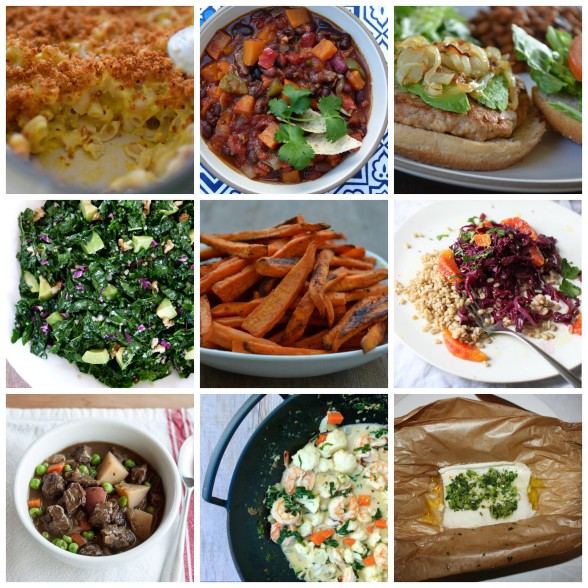
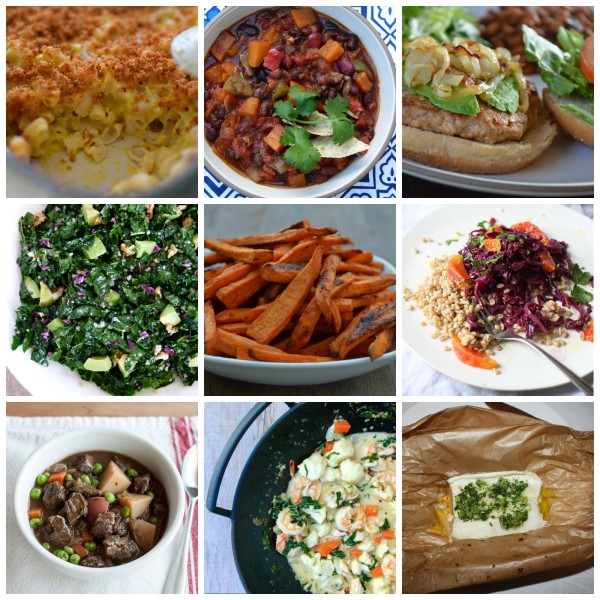
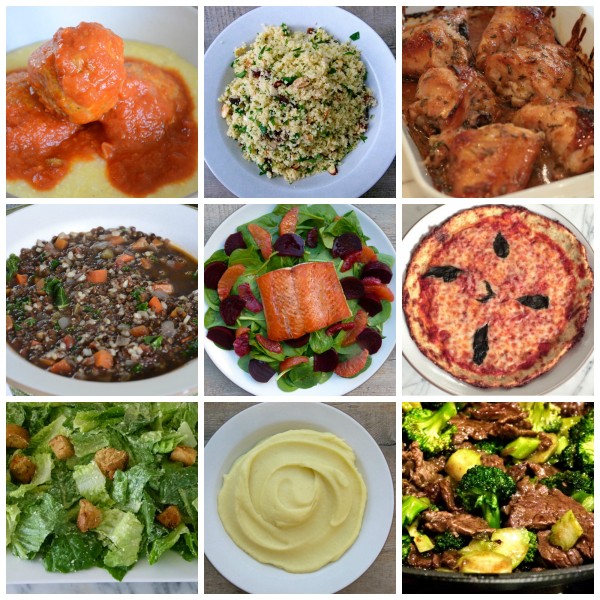

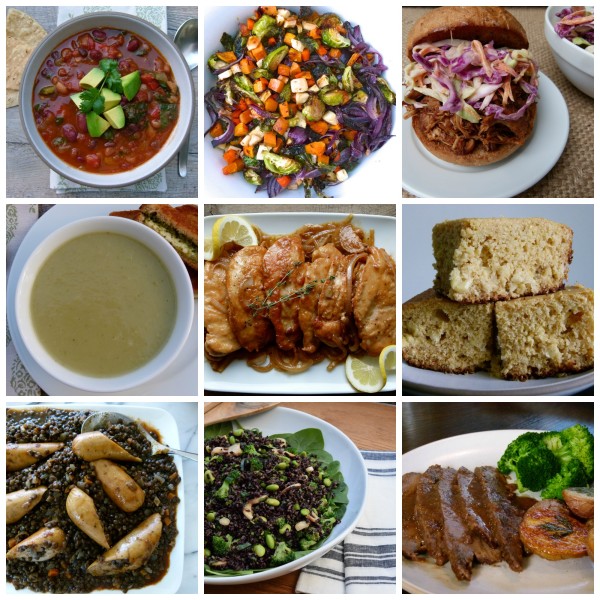
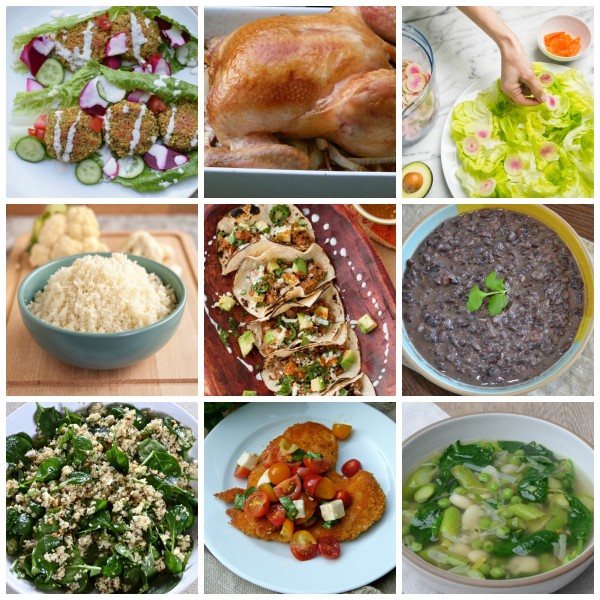





LOVE these weekly dinner planners! I’m going to make your teriyaki chicken tonight. Is there a good sub for sake in the teriyaki sauce?
Haven’t tried anything else. Buggers, sorry.
Thank you, thank you for your weekly dinner planning posts! I’m finding a lot of inspiration in them and appreciate the links to other sites, as well. Cheers!
You’re welcome! 🙂
I am sorry, but you lost me at “disastrous to the environment.” I have visited your site to find healthy ways to feed my family and new ways to use ingredients. If you want to join the political parade, I will go elsewhere. Also, when you make statements like the one above, I would also back up what you are saying or not make them at all. A funny piece from a CNN flunky on Texas barbecue is not sufficient. CNN does a good job at building a picture, but that picture is only part of the story.
Take a close look at the graph within the EPA piece below and you will find that Enteric Fermentation, which is what you are referring to as the methane produced by cattle as “being disastrous to the environment” is also produced by cattle that produce milk. The milk producer’s portion may be more significant, if you read the second EPA report below the first one, but then who wants to pick on little children?
I am not a fan of the EPA, but their data is interesting. I think it is important for those of us who speak publicly to tell all of the story, not just the parts that fit our politics.
There are way to many people in this country who do not consume enough protein each day to power their brains and I can promise they are not interested in Enteric Fermentation. The production of high sugar and carbohydrate foods, which are cheap sustains many in Americans and once that consumption cycle of these type of foods begins, it is just like a drug. Pamela, curbing the cycle of sugar and carbohydrate consumption would alter the high health care costs in this country, which might have an even bigger impact on the human environment.
Thank you,
John
http://www3.epa.gov/climatechange/ghgemissions/gases/ch4.html
http://www3.epa.gov/ttnchie1/ap42/ch14/final/c14s04.pdf
Hi John, I appreciate your willingness to have a conversation about this. With all due respect, I have no political motivation with this statement and I have mentioned several times on my site the link between cattle and environmental health/sustainability. And many chefs do the same. It is a food issue, the same way one can make the argument to choose as many locally-grown products as possible because of the environmental impact of transporting produce and the nutritional value of food after it has been off the vine for longer periods of time. Or the nutritional benefits of organic versus conventionally grown food. We should know the implications of our choices. Whereas everything can be controversial, and one can find data to support any argument, there is an overwhelming amount of data pointing the finger at livestock-based food production causing one-fifth of global greenhouse gas emissions, and as the key land user and source of water pollution by nutrient overabundance. With respect to your point about sugar and carbohydrate consumption, you are 100% correct! In fact, your statement about it being “just like a drug” is one I made almost 4 years ago in this article and I received quite a bit of backlash about it. What is most important to me is the discussion and knowing there’s more to our food choices than meets the eye. Thank you for being here today and adding value to that.